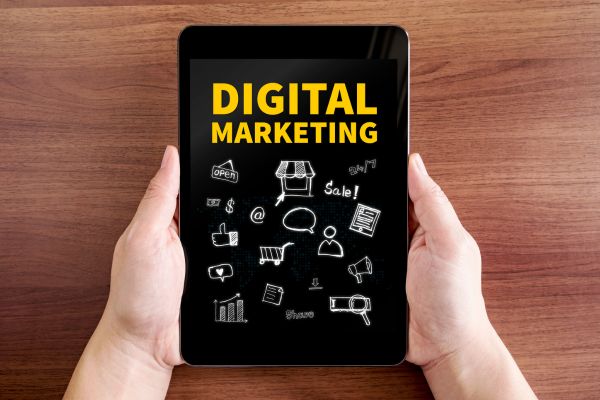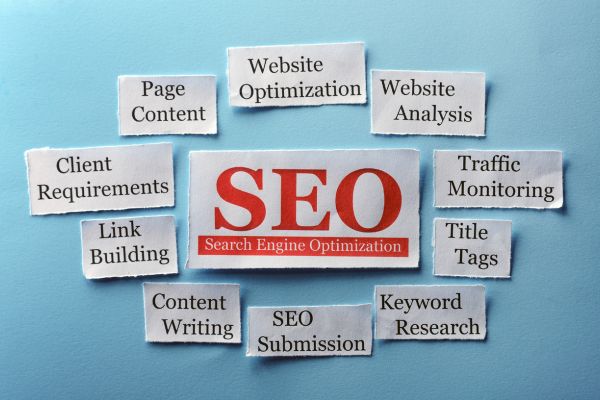5 Key Trends Reshaping B2B Marketing in 2025

B2B marketing is evolving at a rapid pace. What worked a few years ago may no longer be effective today. Businesses are shifting their focus from simply generating leads to proving the real impact of marketing on revenue and return on investment (ROI).
A recent LinkedIn report highlights five key trends that are reshaping B2B marketing. These insights come from top industry leaders at Microsoft, PwC, ServiceNow, and other global firms.
Understanding these trends will help you improve your strategy, align with sales teams, and justify your marketing budget to executives.
Revenue-Centric Metrics: Moving Beyond Leads
For years, marketers focused on traditional metrics like cost-per-lead (CPL) and marketing-qualified leads (MQLs). However, businesses are realising that these numbers do not always translate into actual revenue.
Now, there is a shift towards revenue-focused metrics, including:
- Sourced pipeline – Deals that are directly generated by marketing efforts.
- Influenced pipeline – Deals where marketing played a key role in influencing buyer decisions.
- Marketing-attributed revenue – The amount of revenue that can be credited to marketing campaigns.
This change means marketing teams must connect their activities to real business outcomes. It is no longer about the number of leads generated but about how many of those leads turn into paying customers.
If a marketing campaign generates 1,000 leads but only 10 of them convert into sales, it is not necessarily a success. The key is to track how much revenue those leads generate and how marketing contributes to the overall pipeline.
How to adapt
- Integrate CRM systems with marketing data to track revenue impact.
- Focus on pipeline metrics instead of just lead volume.
- Align with sales teams to track how marketing contributes to closing deals.
Proving ROI: Marketing Must Show Business Impact
In today’s business landscape, CFOs are demanding proof that marketing efforts contribute to revenue. They are not just interested in increasing brand awareness—they need to see its financial impact.
To meet these expectations, marketers must:
- Separate brand and demand budgets – This ensures brand-building investments are tracked separately from lead generation efforts.
- Link brand awareness to revenue – Show how increasing brand recognition leads to higher conversions and long-term business growth.
- Measure the full customer journey – Identify where marketing efforts influence buyer decisions and contribute to closing deals.
If a company invests £50,000 in brand marketing, the CFO will want to know how this translates into revenue. Marketers must demonstrate that brand awareness efforts lead to higher conversions, improved customer retention, and long-term growth.
How to adapt
- Use ROI-focused reporting tools to track brand engagement and revenue impact.
- Conduct brand lift studies to measure the effectiveness of branding campaigns.
- Track pipeline influence to see how marketing efforts impact deals over time.
AI-Powered Attribution: Understanding the Buyer’s Journey
The B2B buying process has become more complex, often involving six to ten decision-makers. This makes it difficult to track which marketing activities truly drive sales.
Traditional last-click attribution (which credits the last interaction before purchase) no longer provides an accurate picture. Instead, businesses are adopting AI-powered attribution models to map the full buyer journey.
These models help marketers understand:
- Which marketing channels drive the most revenue.
- How different touchpoints influence purchasing decisions.
- Where to allocate budget for the best results.
A typical B2B customer might see a LinkedIn ad, read a blog post, attend a webinar, and then request a demo. AI-powered attribution helps show how each step contributes to the final purchase rather than giving all the credit to the last interaction.
How to adapt
- Use multi-touch attribution models instead of last-click attribution.
- Invest in AI-powered analytics tools to track the full customer journey.
- Integrate LinkedIn Sales Navigator with CRM systems for better insights.
Multi-Timeframe Measurement: Balancing Short & Long-Term Goals
Many marketing teams focus heavily on short-term performance metrics such as cost-per-lead or click-through rates. However, successful marketers are now measuring performance across multiple timeframes to ensure long-term growth.
The three key measurement timeframes are:
- Real-time: Optimising campaigns based on immediate results, such as cost-per-qualified lead and engagement rates.
- Mid-term (3–12 weeks): Tracking pipeline impact and return on ad spend (ROAS).
- Long-term: Measuring lifetime value (LTV) and the lasting impact of brand investments.
By tracking results across different timeframes, businesses avoid over-prioritising short-term gains while neglecting brand-building and customer retention.
If marketing teams only focus on short-term ad performance, they may stop campaigns that do not immediately convert. However, many B2B deals take months to close, so tracking long-term metrics is essential for understanding marketing effectiveness.
How to adapt
- Measure real-time results but do not make decisions based on them alone.
- Track long-term revenue impact to prove marketing’s full value.
- Use LTV-adjusted ROI to balance branding and direct response efforts.
Unified Real-Time Dashboards: Breaking Down Data Silos
Data management remains a major challenge for B2B marketers. A significant 73% of marketers say that siloed data makes it difficult to track success accurately.
Marketing, sales, and finance teams often work with separate analytics tools, leading to inconsistent reporting and fragmented insights. The solution is to use unified real-time dashboards that connect all marketing and sales data in one place.
Some of the key tools gaining popularity include:
- LinkedIn Insight Tag – Tracks user behaviour across websites.
- Hybrid metrics dashboards – Balance brand engagement with demand generation.
- Predictive AI models – Identify revenue influences that are not immediately visible.
Instead of checking multiple platforms like Google Analytics, CRM systems, and LinkedIn reports separately, a single dashboard provides a complete picture of marketing performance.
How to adapt
- Invest in real-time marketing dashboards to unify data.
- Ensure marketing, sales, and finance teams share key metrics.
- Use predictive AI tools to uncover hidden insights and patterns.
Key Takeaways: What This Means for You
B2B marketing is changing rapidly, and staying ahead requires adapting your strategy to align with these emerging trends.
Here are the key actions to focus on:
- Link marketing efforts directly to revenue rather than just lead generation.
- Prove brand ROI by demonstrating how awareness efforts drive long-term growth.
- Use AI-powered attribution to understand the full buyer journey.
- Measure performance across multiple timeframes to balance short-term gains and long-term value.
- Unify marketing data with real-time dashboards for better decision-making.
Final Thoughts
B2B marketing success now depends on data-driven decision-making. If you can prove your marketing’s impact on revenue, you will gain more budget, align better with sales, and build stronger brand authority.
Are you ready for the future of B2B marketing? Start by shifting your focus from leads to revenue, leveraging AI for deeper insights, and adopting long-term measurement strategies.
By staying ahead of these trends, you will ensure your marketing efforts drive real, measurable growth.
Calling all Marketers!
🔴 Are you tired of searching for the perfect job?
Whether you're into content writing, SEO, social media, graphic design, or video editing—full-time, freelance, remote, or onsite—we've got your back!
👉 We post over 30 job opportunities every single day. Yes, every day (all verified).
Join the most reliable and fastest-growing community out there! ❤️
And guess what? It’s FREE 🤑
✅ Join our WhatsApp Group (Click Here) and Telegram Channel (Click Here) today for instant updates.






